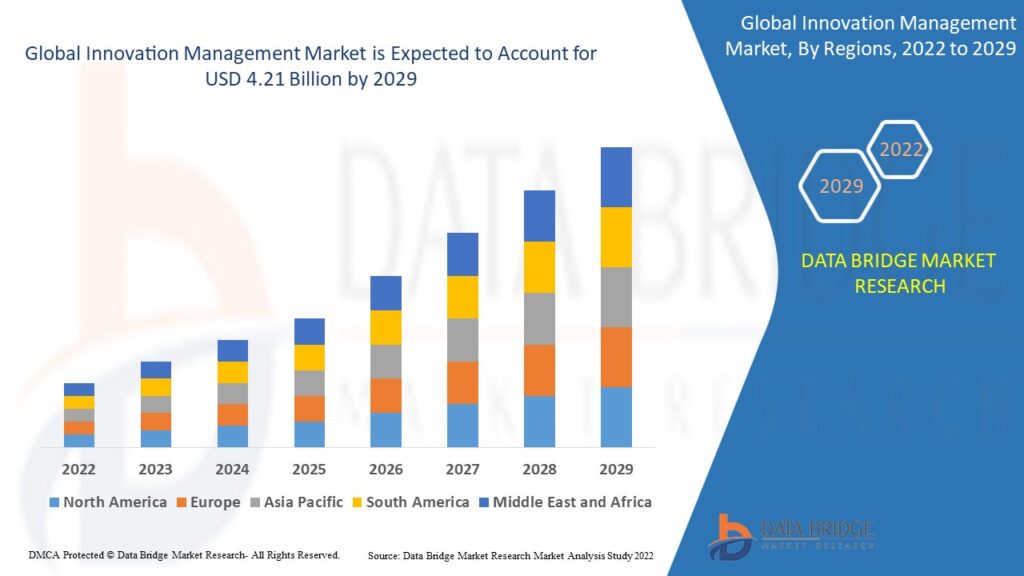Introduction
Innovation has become the cornerstone of success for businesses in today’s dynamic and competitive landscape. Whether it’s developing groundbreaking products, streamlining processes, or finding novel solutions to complex problems, innovation is essential for staying ahead in the market. However, measuring the success of innovation initiatives can be challenging due to their intangible nature. This is where metrics and key performance indicators (KPIs) play a crucial role in providing organizations with valuable insights into the effectiveness of their innovation management strategies.
Definition
Innovation management is the practice of overseeing an organization’s innovation process from the ideation stage to the effective completion of the project. The process includes developing possibilities, applying a creative strategy, and managing operations and procedures. Innovation in products, services, and skills development is facilitated by technology, as is the development of novel business models.
Understanding Innovation Metrics
Innovation metrics are quantitative and qualitative measurements used to evaluate various aspects of the innovation process. These metrics help organizations assess the performance of their innovation initiatives, identify areas for improvement, and make data-driven decisions. While there is no one-size-fits-all approach to measuring innovation success, several key metrics are commonly used across industries:
Ideation Rate: This metric measures the number of new ideas generated within a specific timeframe. It provides insights into the organization’s creativity and its ability to generate innovative solutions.
Time-to-Market: Time-to-market measures the speed at which a product or service is developed and launched. Shorter time-to-market indicates efficient innovation processes and the ability to respond quickly to market demands.
R&D Investment: Tracking the investment in research and development (R&D) as a percentage of revenue or budget provides a clear indication of the organization’s commitment to innovation.
Customer Satisfaction: Customer satisfaction metrics, such as Net Promoter Score (NPS) or customer feedback ratings, gauge how well innovations meet customer needs and expectations.
Revenue from New Products: This metric tracks the revenue generated from new products or services introduced to the market, indicating the commercial success of innovation efforts.
Employee Engagement: Employee engagement surveys and retention rates measure the level of involvement and commitment of employees to innovation initiatives.
Importance of KPIs in Innovation Management
Key performance indicators (KPIs) are specific metrics used to evaluate the progress towards strategic goals and objectives. In the context of innovation management, KPIs provide organizations with actionable insights into the effectiveness of their innovation processes and help align innovation efforts with business objectives. Here are some essential KPIs for measuring innovation success:
Innovation Pipeline Health: This KPI assesses the health of the innovation pipeline by tracking the number of ideas at each stage of the innovation process – from ideation to commercialization. It helps identify bottlenecks and ensures a steady flow of viable ideas.
Return on Innovation Investment (ROII): ROII measures the financial return generated from innovation investments, taking into account the costs associated with R&D, product development, and marketing. A positive ROII indicates that innovation initiatives are delivering value to the organization.
Success Rate of Innovation Projects: This KPI evaluates the percentage of innovation projects that successfully meet predefined objectives, such as launching a new product, improving operational efficiency, or entering new markets. It helps assess the effectiveness of project management and resource allocation.
Innovation Culture Index: This KPI measures the organization’s culture and climate for innovation, including factors such as leadership support, risk tolerance, and collaboration among teams. A high innovation culture index indicates an environment conducive to creativity and experimentation.
Speed of Innovation: This KPI tracks the time it takes for ideas to progress through the innovation process, from conception to implementation. A shorter innovation cycle time suggests agile and efficient innovation practices.
Market Share Growth: Market share growth measures the increase in market share attributable to innovative products or services. It reflects the organization’s ability to capture new customers and compete effectively in the market.
Implementing Effective Metrics and KPIs
While identifying relevant metrics and KPIs is essential, implementing them effectively is equally crucial for measuring innovation success. Here are some best practices for implementing innovation metrics and KPIs:
Align Metrics with Strategic Objectives: Ensure that the chosen metrics and KPIs align with the organization’s overall strategic goals and objectives. This alignment ensures that innovation efforts contribute directly to business growth and competitiveness.
Use a Balanced Scorecard Approach: Adopt a balanced scorecard approach that includes a mix of financial and non-financial metrics to provide a comprehensive view of innovation performance. This approach helps organizations avoid focusing solely on short-term financial gains and encourages long-term innovation sustainability.
Establish Baselines and Targets: Establish baseline measurements for each metric and set realistic targets for improvement. Regularly monitor progress against these targets and adjust strategies and resource allocation as needed to achieve desired outcomes.
Promote Transparency and Accountability: Foster a culture of transparency and accountability by sharing innovation metrics and KPIs with relevant stakeholders across the organization. Encourage open communication and collaboration to drive continuous improvement and innovation excellence.
Embrace Continuous Learning: View measurement and evaluation as an ongoing learning process rather than a one-time activity. Analyze performance data regularly, identify trends and patterns, and use insights to refine innovation strategies and practices.
Growth Rate of Innovation Management Market
According to Data Bridge Market Research, the innovation management market is projected to grow at a compound annual growth rate (CAGR) of 18.8% from 2022 to 2029, from an estimated value of USD 1.06 billion in 2021 to USD 4.21 billion.
Conclusion
Measuring success in innovation management requires a systematic approach that combines both quantitative metrics and qualitative KPIs. By tracking key indicators of innovation performance, organizations can gain valuable insights into the effectiveness of their innovation initiatives, identify areas for improvement, and drive sustainable growth and competitiveness. By implementing best practices for selecting, implementing, and monitoring metrics and KPIs, organizations can foster a culture of innovation excellence and position themselves for long-term success in today’s rapidly evolving business landscape.
To read more click here.
https://www.databridgemarketresearch.com/reports/global-innovation-management-market


